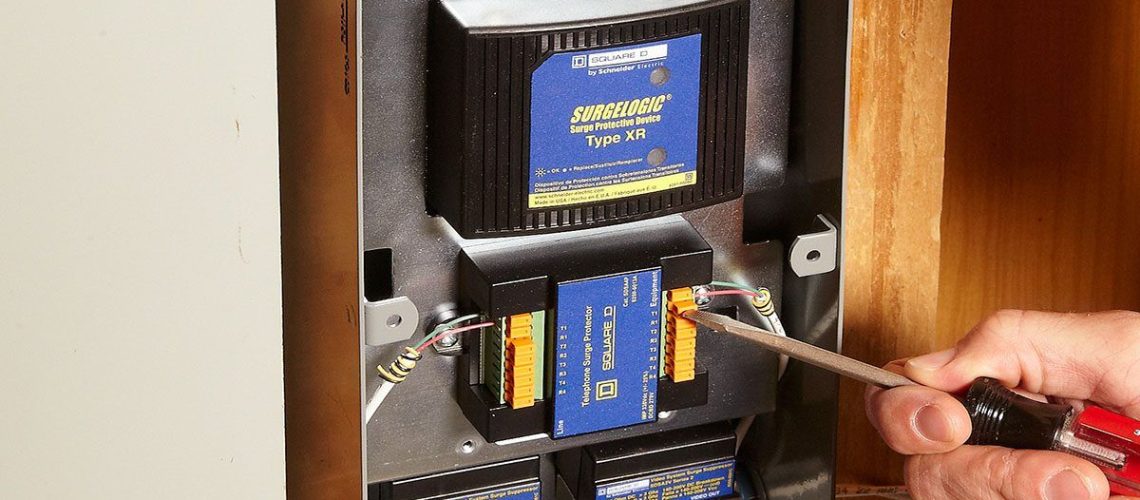Power surges are unavoidable occurrences in our current electrical system. Many modern devices are more fragile than older machine components, making them more susceptible to current surges.
A surge protector is vital equipment for homeowners with electronic devices. In the event of a power surge, your devices could get damaged. A surge protector is designed to prevent this from happening, and it does this by absorbing the excess voltage and diverting it to the ground.
Types Of Surge Protectors
Whole-house Surge Protector
A whole-house surge protector is installed at your electrical panel, protecting all the electronic devices in your home.
Plug-in Surge Protector
This doesn’t protect all electronic devices in your home or office; this type of surge protector is plugged into an outlet and protects only the electronic devices that are plugged into it.
Battery Backup And Surge Protector
This type of surge protector has two functions: To protect from surges and provide backup power should a power outage occur.
Portable Surge Protector
This type of surge protector can be plugged into an outlet or powered by batteries. It is lightweight and small, making it convenient to carry along.
How To Choose A Surge Protector?
There are so many different kinds of surge protectors on the market today that it might take a lot of work to choose one. There are things that a good surge protector should have, and some are much more important than others. Here are some things you should look for in a surge protector:
Indicator Lights
Every surge protector has a set lifespan, usually determined by how hard they work. Sometimes the surge protector might suffer some damage when diverting power surge. Hence, the first important feature your surge protector should have is an indicator light. This feature tells whether your surge protector is functioning properly or not. If the light stops working, that is a sign that you need a new one.
UL Rating
We recommend purchasing a surge protector that comes with a UL rating. The UL certification denotes that the protector has been thoroughly tested and met all requirements.
Clamping Voltage
This is the performance measurement of a surge protector’s ability to reduce the surge. A surge protector with lower clamping will activate much earlier and protect devices from a power surge much faster.
Response Time
This refers to the time it takes for a surge protector to respond to a power surge. Usually, surge protectors don’t kick in immediately as there is a slight delay in response. A surge protector that takes longer to detect a power surge puts your electronics and appliances at risk for longer.
In searching for a surge protector, look out for one that responds quickly.
Conclusion
It’s not strange for an electrical grid to experience electrical surges. However, this doesn’t downplay the effect of a power surge in your home; these surges can damage expensive devices, but with a surge protector, the chances of that happening are greatly reduced.

